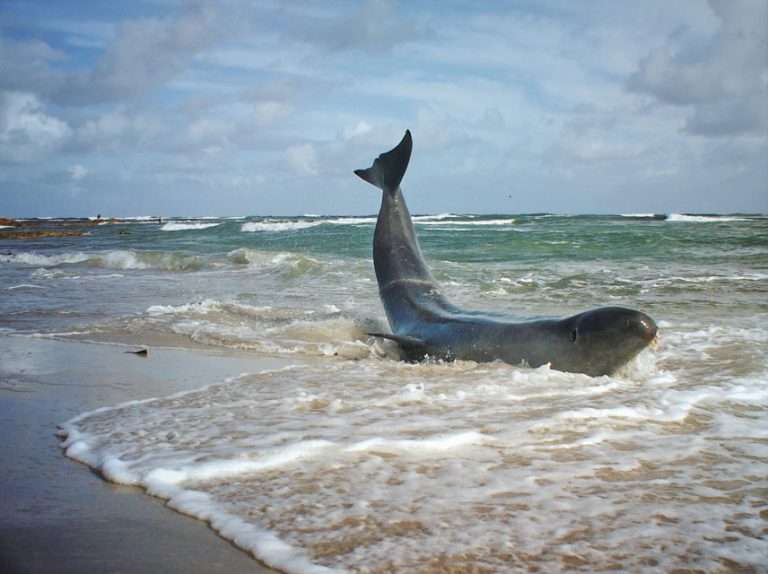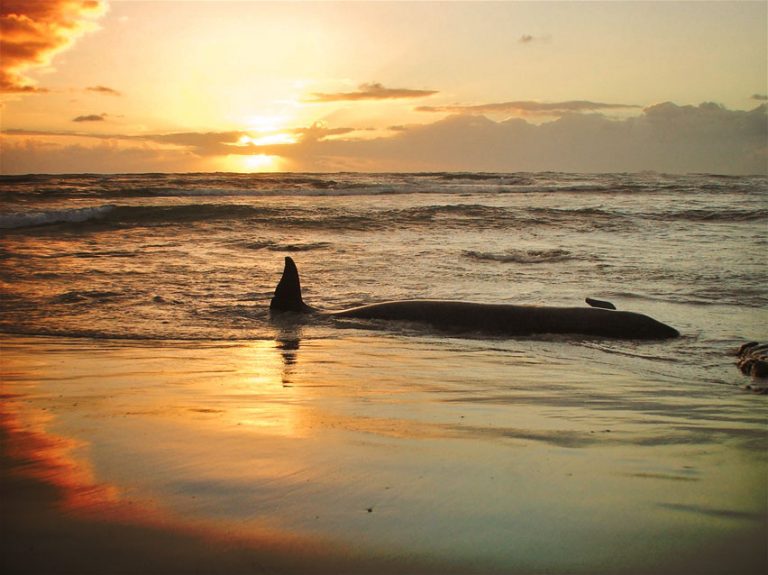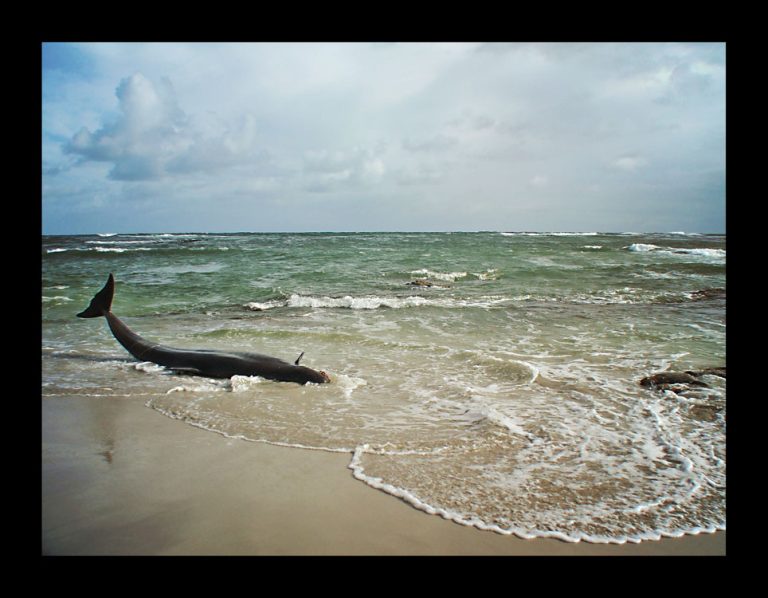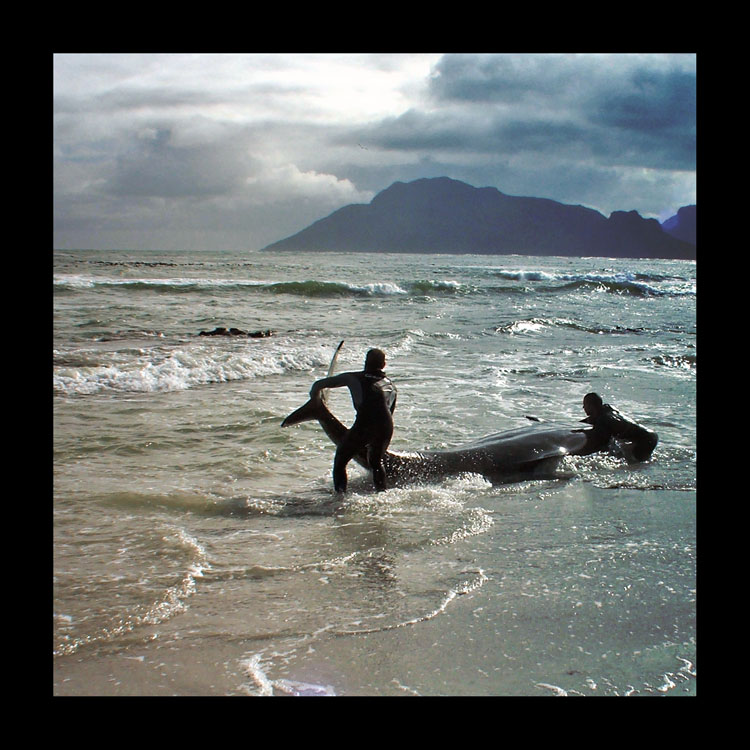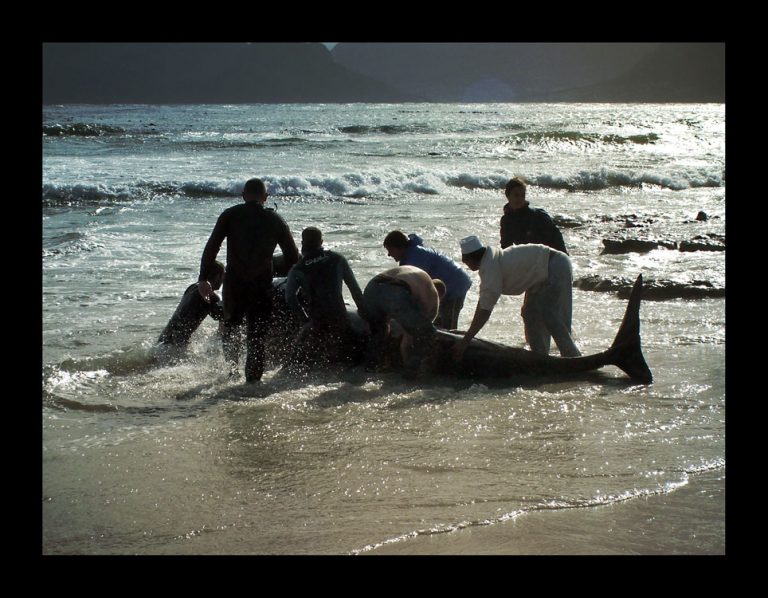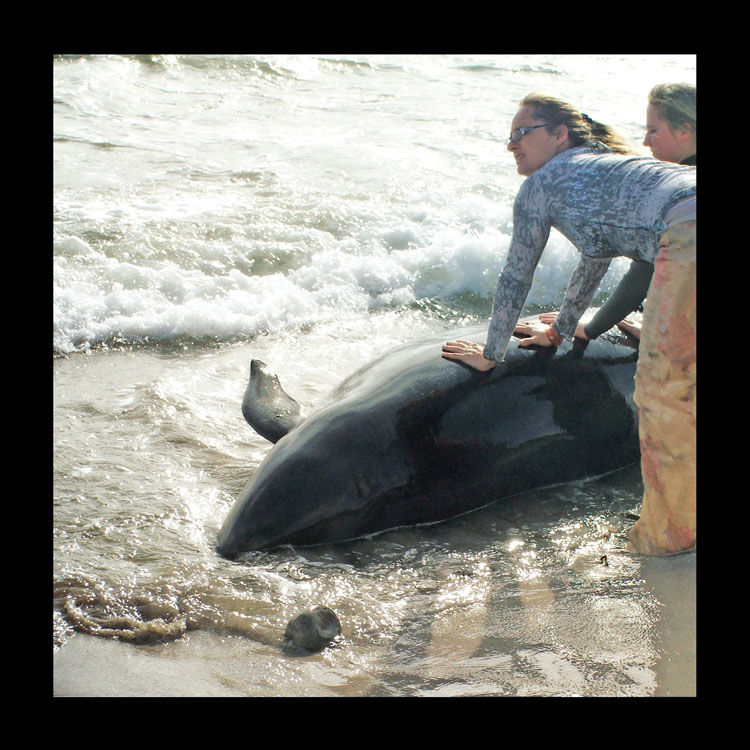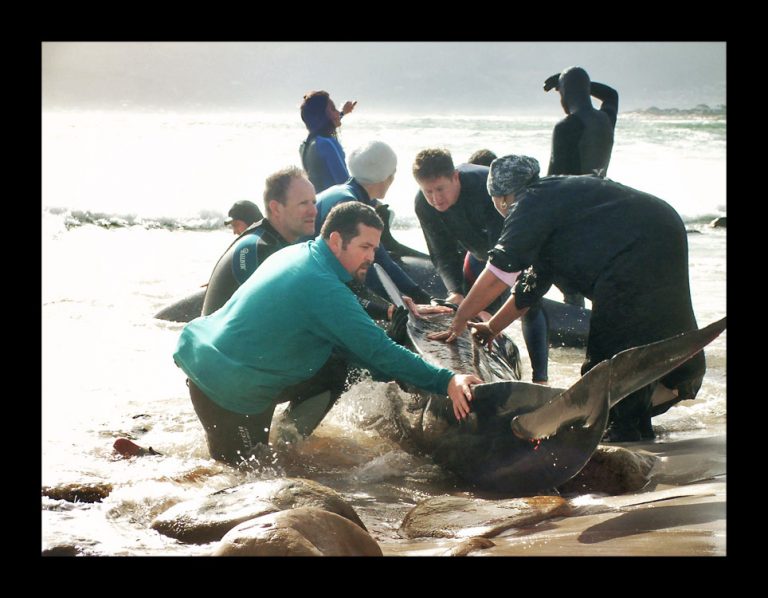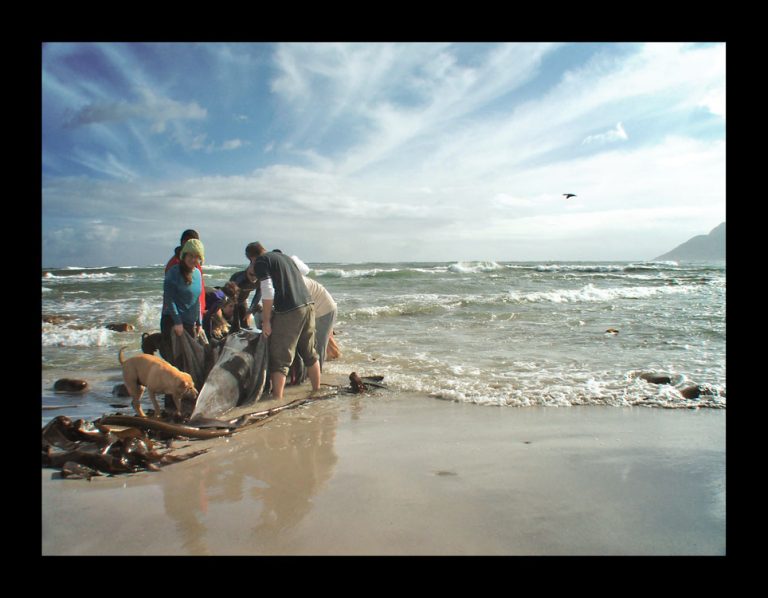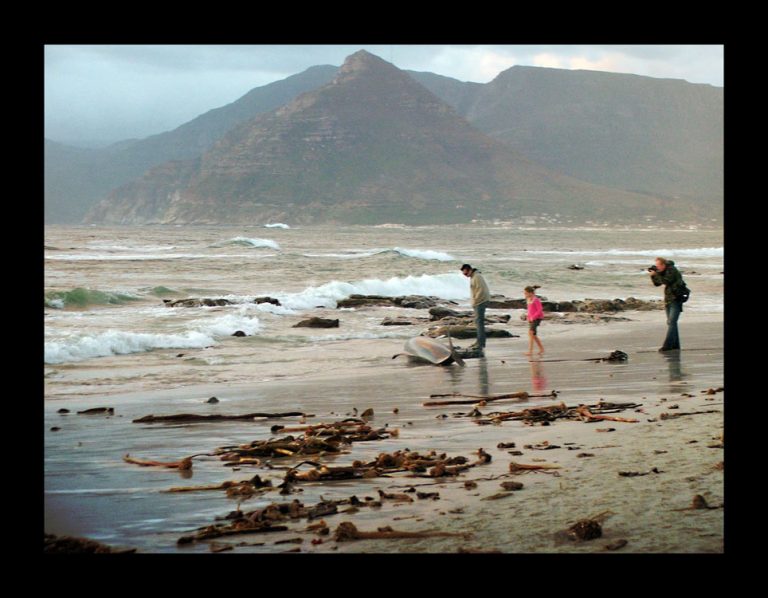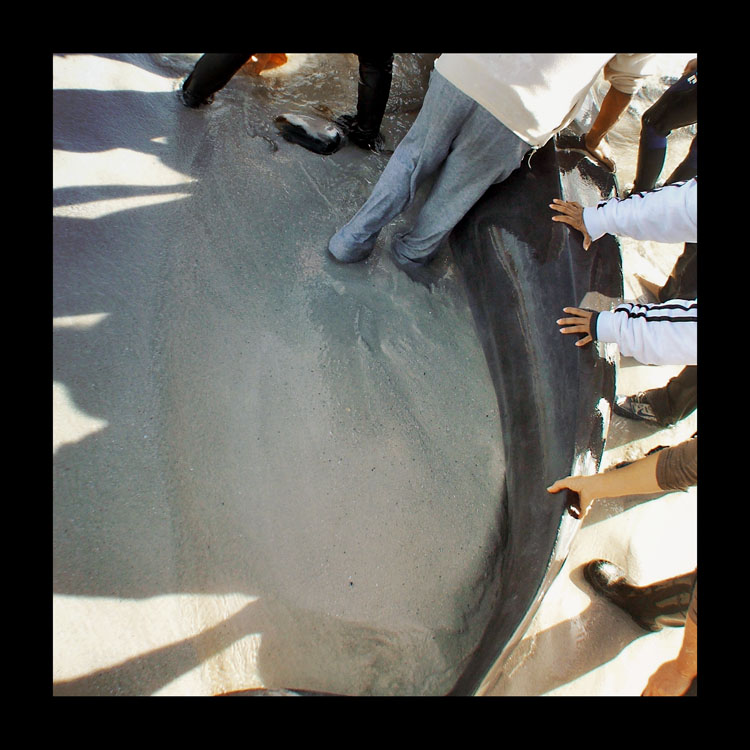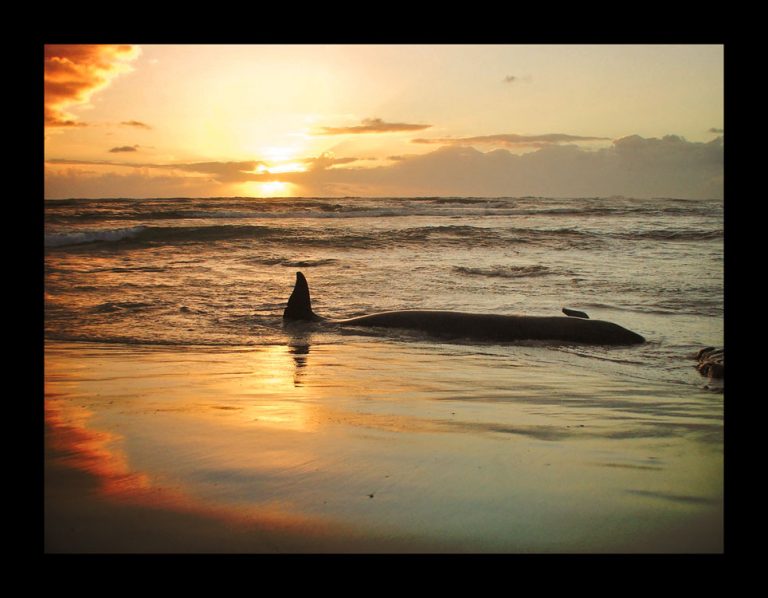Beach of Tragedy
Approximately fifty-five pilot whales washed up on the shores of Kommetjie beach during the early hours of Saturday morning 29 May 2009, prompting a massive all-day rescue effort. Hundreds of locals wearing wetsuits or shorts braved high winds and rough waves to try to push them back into the sea.
Unfavourable conditions hampered rescue operations to save the adults and calves which came ashore in the early hours of Saturday morning.
Many of the whales were being beached once again as soon as they were returned to the water. The pilot whales, about 3m (10ft) long, are common to the waters off South Africa.
Scientists then decided there was no alternative but to kill about 35 whales to prevent further suffering. A further 10 died of stress. And it was feared that the whales that did manage to escape were too exhausted to survive. “The most humane way to perform euthanasia on whales is to shoot them through the brain and this was successfully performed on those whales suffering on the beach. We wish to stress emphatically that the most humane effort was employed to prevent further suffering of these animals”
Police desperately tried to clear the beach of dozens of families who had flocked to the shores in hope of a happy ending which turned nightmarish. There were also minor scuffles between officials and distraught volunteers trying to protect the whales.
Cape Town authorities mobilised the police, fire brigade, navy, lifeboat services, disaster management teams and expert divers as part of the rescue operation. They brought in six bulldozers to try to move the whales, which were about 3m long, back to sea. But the whales – also known as false killer whales – kept swimming back to shore and became increasingly stressed.
It was still unclear why the whales had come ashore. This was the first mass beaching of whales seen on the popular beach at Kommitjie, near Cape Point.
“It was a sad situation, we tried to move them towards the sea, they would go and we would be all cheering and then they would come back towards the beach again. The sea was rough which made the whole process even more tiring for everyone. We tried to calm them down and they did as soon as we touched them, they looked at us with their incredible eyes as if to say ‘what is happening to us?’ There was nothing we could do. The volunteers really tried hard. It was very sad indeed.”
Celine, Kommetjie South Africa.
“As a volunteer on the scene, I am deeply impressed by the goodwill of local residents who pitched in to help. Still, I feel that we could have done better. Although most whales washed up on the beach, there were many washing up on the rocks to the south of the beach. There seemed to be little communication or co-ordination between the various teams tending to the whales – especially in the late afternoon.
Confusion reigned as to the best course of action. In addition, the public were told to stay away completely, yet volunteers were exhausted and in need of replacement volunteers in the water. When the shooting began, a wave of panic and sadness swept the crowd. It seems a tragedy of epic scale to work for hours on end, only to have the whales return to shore and be shot. We’d all love to know what drove them out of the water. We’re all left wondering – is man(un)kind responsible?”
Candice Pelser, Cape Town South Africa.

